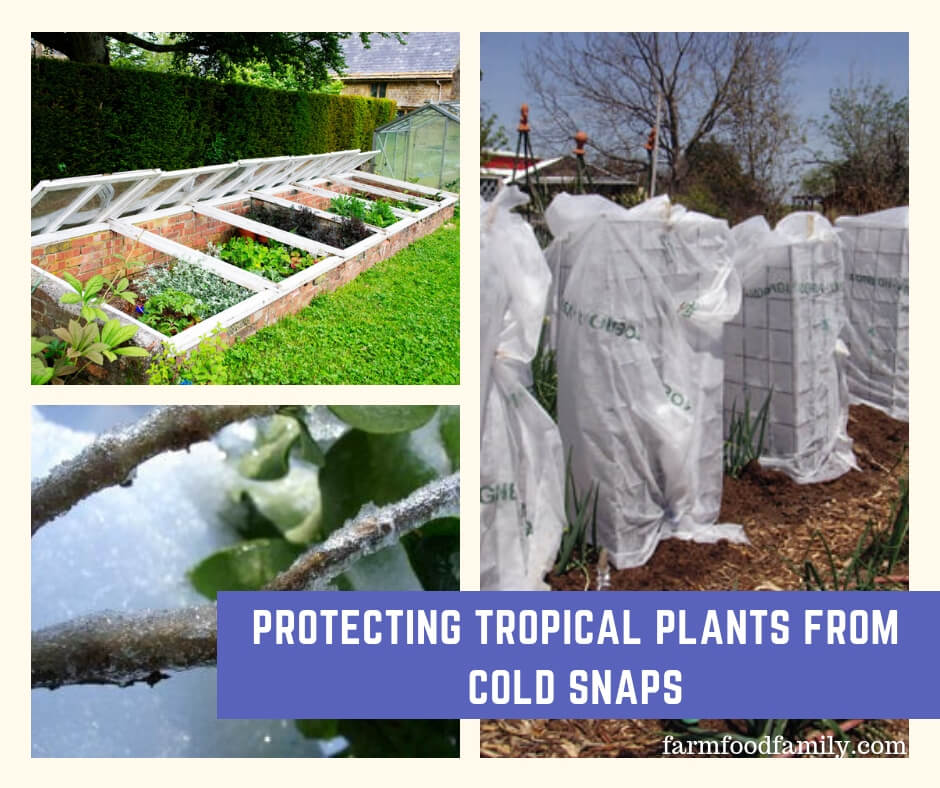While some tropical and subtropical plants will be fine at temperatures above freezing, most sustain damage at temperatures below 40 degrees.
Living in a subtropical or tropical area is a wonderful experience for gardeners. Year-around gardening without a greenhouse is every serious gardener’s dream. While temperatures in subtropical and tropical areas rarely dip below 40, there are those occasional cold snaps, where protecting tender plants is necessary.
Water Plants Well Before a Cold Snap

Well watered plants are more likely to survive the cold, especially if the plants are too large to be covered.
Tropical trees and edibles will likely sustain leaf or limb damage, but if they are well watered, they have a much better chance of staying alive to grow back.
Covering Plants During Cold Snaps

The most effective and simplest way to protect tropical plants during cold snaps is to cover them with cloth. Depending on the temperatures, plants should be covered with sheets or blankets. This covering not only provides a warmer, insulating environment around the plant, but protects it from the cold air damaging the leaves.
Covering with plastic is not recommended, due to the fact that even during the cold weather, the sun is very strong, and will burn anything that is touching the plastic. Heat builds up rapidly, which itself can damage delicate tropical plant leaves.
Creating an “Ice Blanket” for Larger Tropicals
When driving through orange groves in the colder areas of Florida, travelers will see irrigation pipes along the ground, and tall pipes going up next to and above the trees. These are turned on during freezing weather and allowed to run all night. As the water hits the leaves and fruit, an insulating layer of ice is created that adds protection from the cold.
For larger, cold sensitive fruit and flowering trees, this is a good method of protection, if a yard has the capability. Even a simple lawn sprinkler can create a tall enough spray to protect most smaller trees. Avocados and Mangos must be protected from cold for the first five years of their lives, and this is the best method of doing that when they get larger.
Building a Temporary Hoop House or Cold Frame

Plastic and PVC pipe or wood can be used to create a temporary cold frame that will protect smaller plants. If the area has regular cold snaps, it may be beneficial to construct something that can be removed in warmer weather, yet easily reconstructed during the winter, such as a simple hoop house.
Again, be careful not to let the plastic touch the plants, and to provide air circulation during sunlight hours so that heat doesn’t build up inside the structure.
Protecting Potted Plants

The simplest way to protect potted plants is to bring them indoors. If there is no way to bring them into the home, a garage or shed can be used. Simply having them under cover on a porch and covered with blankets can provide enough protection if temperatures are not below freezing.
Potted plants too large to move can simply be laid on their sides and covered with cloth for protection.
Save Money by Protecting Plants from Cold Snaps
Tropical and subtropical plants can be a big investment, and unfortunately, one that can be wiped out in a single night of unusually cold weather. By protecting the plants, there is no need to replace them, thus saving money in the long run.
Landscape plants as well as potted plants depend on the gardener for everything they need to thrive. Protecting them from harsh weather is just another way gardeners show their love for their leafy friends.


